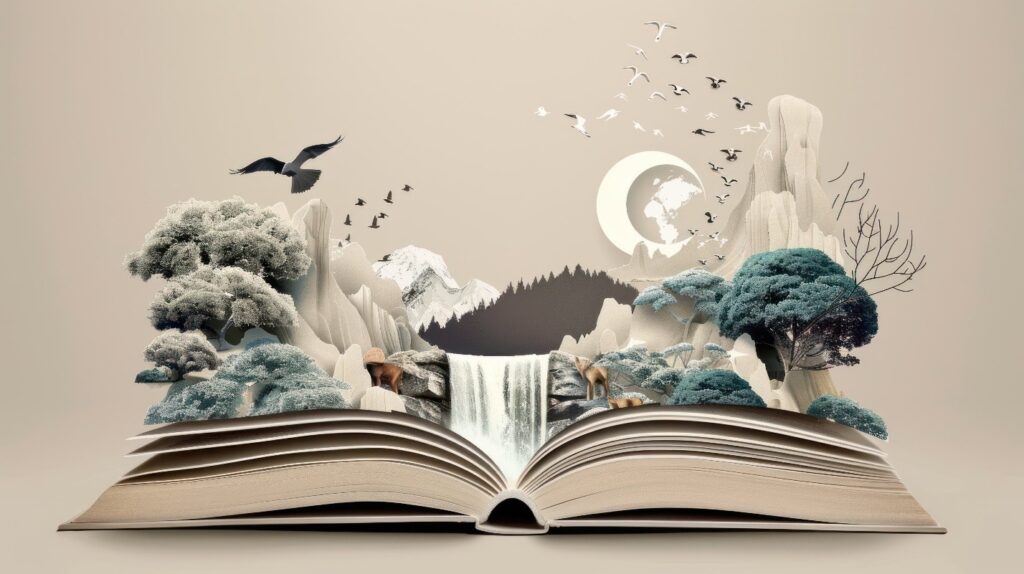
Symbolism in fiction is an essential tool that allows writers to convey deeper meanings, create emotional resonance, and engage readers on a more profound level. It is the art of infusing objects, characters, settings, or actions with layers of significance beyond their literal meaning. A well-crafted symbol can transform an ordinary story into an extraordinary narrative, leaving a lasting impression on readers. Rebecca Hamilton author explores the power of symbolism in fiction, how it enriches storytelling, and why it remains a cornerstone of literary creativity.
What Is Symbolism in Fiction?
At its core, symbolism is a literary device where something tangible represents an abstract idea. It serves as a bridge between the physical world of the story and the intangible themes or emotions the writer seeks to convey. A rose might symbolize love or beauty, while a storm could represent turmoil or change. Unlike overt explanations, symbols work subtly, encouraging readers to interpret and discover meaning on their own.
Symbolism can manifest in various forms, including:
- Objects: Items that hold significance beyond their functional purpose (e.g., a mockingbird in To Kill a Mockingbird symbolizing innocence and vulnerability).
- Characters: Individuals who embody larger ideas, such as greed, hope, or justice.
- Settings: Places that reflect themes or mood, like the desolate moors in Wuthering Heights, mirroring the characters’ emotional turbulence.
- Actions: Repeated gestures or events that take on symbolic meaning, such as washing hands symbolizing guilt in Macbeth.
Why Is Symbolism Important in Fiction?
Symbolism is not merely decorative; it plays a vital role in enriching stories in several ways:
- Enhancing Depth and Complexity: Symbols add layers to the narrative, allowing readers to peel back meanings as they delve deeper into the text. A story with symbolism becomes more than just a sequence of events—it becomes a tapestry woven with hidden threads, encouraging thoughtful interpretation.
- Creating Emotional Impact: Symbols often evoke powerful emotions by connecting with universal experiences or ideas. For instance, a fading photograph can symbolize loss or the passage of time, resonating with readers on a personal level.
- Strengthening Themes: Symbols reinforce the central themes of a story, acting as subtle reminders of what the narrative is about. In George Orwell’s Animal Farm, the windmill symbolizes both hope and exploitation, underscoring the novella’s themes of power and corruption.
- Encouraging Reader Engagement: The subtlety of symbolism invites readers to become active participants in the story, piecing together meanings and forming interpretations. This engagement can make the reading experience more memorable and rewarding.
Examples of Symbolism in Literature
The most celebrated works of fiction often feature symbolism that enhances their richness and longevity. Consider the following examples:
- The Green Light in The Great Gatsby: F. Scott Fitzgerald’s masterpiece uses the green light at the end of Daisy’s dock as a symbol of Gatsby’s unrelenting pursuit of the American Dream and his longing for an unattainable future. The light represents hope, ambition, and the illusions that drive his life.
- The Conch Shell in Lord of the Flies: William Golding uses the conch shell as a symbol of order, civilization, and authority. As the story progresses and chaos ensues, the destruction of the conch signifies the breakdown of societal norms.
- The Scarlet Letter in The Scarlet Letter: Nathaniel Hawthorne’s iconic scarlet letter “A” evolves throughout the novel, symbolizing sin, shame, and ultimately resilience and individuality, reflecting the changing perceptions of Hester Prynne and her community.
- The Whale in Moby-Dick: Herman Melville’s white whale, Moby Dick, is a complex symbol that represents different things to different characters—obsession, revenge, the unknown, or nature’s power. Its ambiguity allows readers to draw their own conclusions about its significance.
Crafting Effective Symbolism in Fiction
While symbolism can enrich a story, it must be used thoughtfully and deliberately to avoid coming across as forced or contrived. Here are some tips for writers:
- Choose Symbols with Purpose: Ensure that the symbol aligns with the story’s themes or characters. A well-chosen symbol should feel organic to the narrative.
- Be Subtle: Effective symbolism works best when it operates in the background. Overexplaining or drawing too much attention to a symbol can diminish its impact.
- Use Universally Recognizable Symbols: While unique symbols can be powerful, tapping into widely recognized imagery (e.g., water symbolizing renewal) can create immediate resonance with readers.
- Allow for Multiple Interpretations: The beauty of symbolism lies in its ambiguity. Craft symbols that invite different interpretations, enriching the story for diverse readers.
- Balance Symbolism with Narrative: Symbols should complement the story, not overshadow it. Readers should never feel that a symbol is more important than the plot or characters.
Symbolism in Modern Fiction
In contemporary fiction, symbolism remains as relevant as ever, though it often takes on subtler forms. Authors like Haruki Murakami, Margaret Atwood, and Toni Morrison seamlessly weave symbols into their narratives, blending them with themes of identity, social issues, and existential questions. Modern readers, accustomed to visual storytelling through films and media, often appreciate symbolism that operates on both visual and thematic levels.
For example, in The Handmaid’s Tale, Atwood uses the color red as a recurring symbol of fertility, control, and rebellion. The vividness of the symbol reinforces the story’s haunting atmosphere and its commentary on power dynamics.
Symbolism is a powerful and timeless tool that enriches fiction by adding depth, meaning, and emotional resonance. It transforms stories into multifaceted works that linger in the minds of readers, inviting them to explore layers of meaning beyond the surface. Whether it’s an object, a character, or a setting, a well-placed symbol can elevate a narrative from the ordinary to the extraordinary. For writers, mastering the art of symbolism is a gateway to creating stories that are not only memorable but also profoundly impactful.